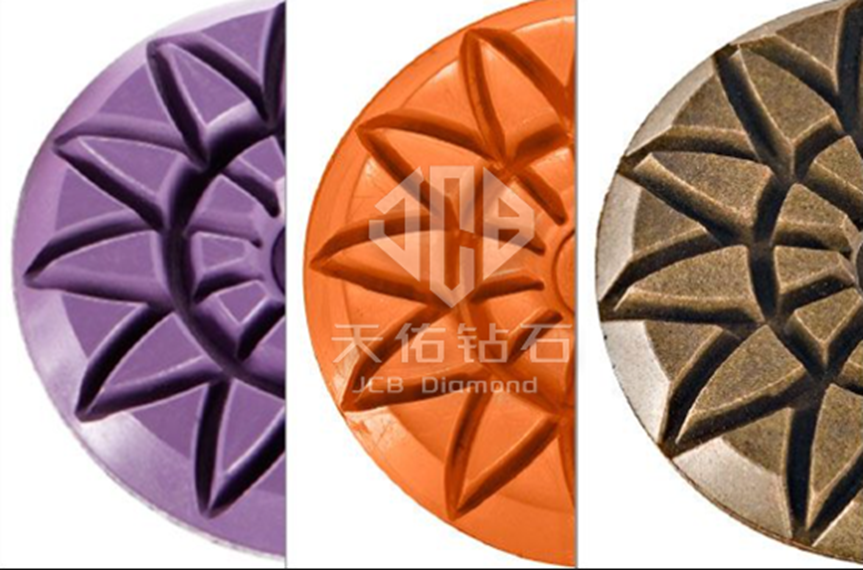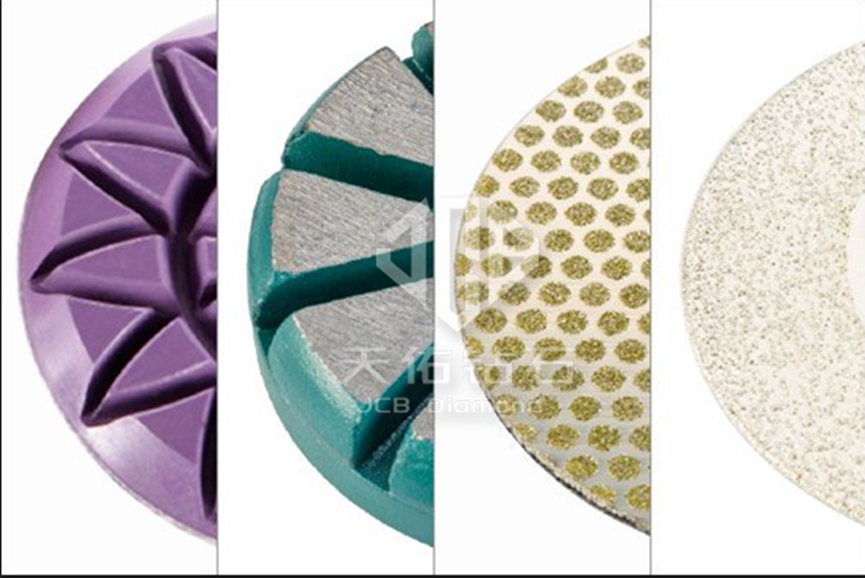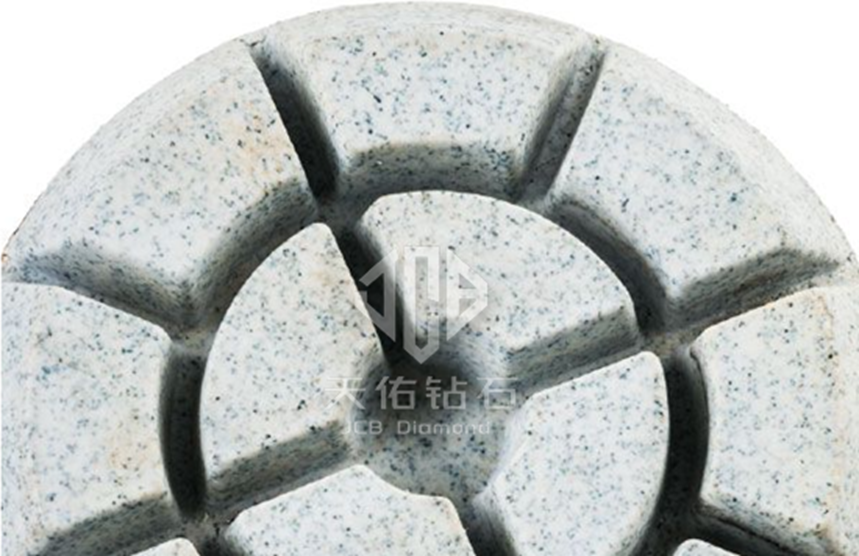In our first article on industrial and synthetic diamonds, we highlighted the importance of selecting the proper grade diamond for the task, but the bond that holds the diamond is equally as important.
There are four common diamond bonds: resin bond, sintered bond, electroplating and vacuum brazing, shown in the image below. In this article we will first cover resin bonded tools commonly known as resin polishing pads. But before we delve into some specifics,
it’s important to understand some basic mechanics.
Resin bond, sintered bond, electroplating, vacuum brazing.

The Mechanics
The bond serves two important functions. First, is that it holds or contains the diamond grit in place for the crystal to be able to cut, grind, shape or polish. Second, the bond needs to progressively wear in order to expose new, unused crystals to the surface.
Working materials can range greatly in hardness and abrasiveness. The rate of diamond exposure is dependent on the density, type of bond and the working material. Paring the correct bond with the working material is critical for performance and tool life.
The Process
Resin bonded diamond tools or resin polishing pads are made by mixing diamond grit with various formulations of resin powders to produce a solid homogenous, multi-layered bond commonly used for very light grinding and polishing.
Visible diamond grit suspended in a resin bond
There are three major resin bond types: marble, granite and concrete resin bond. Each resin bond is specifically formulated to enhance the performance of the tool on the material. Each of the materials vary widely in their density, hardness and abrasiveness,
so selecting the correct resin formulation is critical. Marble, granite and concrete.

Marble and other natural stones in the marble category such as limestone and travertine are all soft and delicate stones that require a specifically formulated matrix. Marble scores between 4 and 5 on the Mohs hardness scale and is comprised of metamorphosed limestone. Typically marble resin bonded tools are run wet to diminish the heat build-up and subsequent resin transfer onto the surface. The resin wears at a slower rate as to not prematurely exposed new diamond crystals that can heavily scratch the delicate surface.
Granite on the other hand can be up to twice as hard as marble scoring between a 6 and 7 on the mohs hardness scale. Granite is an igneous rock that contains quartz crystals. A resin bond designed for granite will wear efficiently to expose new diamond crystals to effectively grind and polish the surface. These pads typically have a higher tolerance for heat and are proportionately denser to tackle a harder surface. The quartz and density of the granite requires a more robust matrix and a higher-grade diamond.
It might be important here to slide in a quick note on engineered stone. Engineered stone is a composition of quartz crystals and resin binder that make it very difficult to polish. In addition to the tough quartz crystal,
the resin binder has a tendency to burn polishing pads not specifically designed for engineered stone. Special high-heat tolerant resins need to be used to avoid marking the surface.
Concrete is characterized as a very abrasive material that can vary widely in hardness depending on the local aggregate used. Typically resin bond tools designed for concrete are run dry and require a high-heat resistance. In addition, they need to be of a higher density to withstand the weight of a concrete machine that can weigh up to 10 times more than a marble machine. Concrete pads also run on planetary machine heads, which means that they rotate many times more than a stone resin pad.

Diamond resin bonded pads have greatly evolved over the years as new applications, new materials and new machines come on to the market. While it may appear on the surface that all resin polishing pads are created equal, it is certainly not the case.
Understanding how these products are made and what constitutes a high-performance product can mean all the difference.